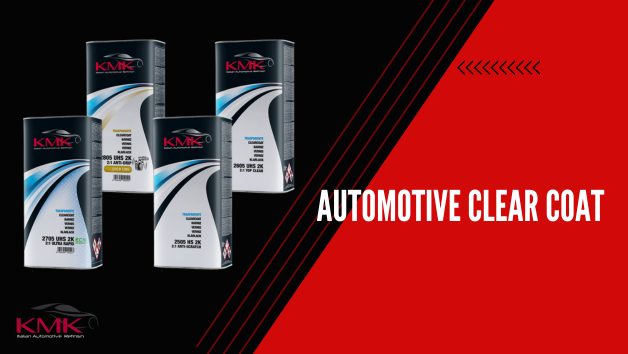The ultimate guide to Automotive Clear Coats
Looking to achieve a flawless, long-lasting automotive finish?
The clear coat you choose plays a critical role, not just in protecting the paint but also in elevating the overall appearance of the vehicle.
A clear coat serves as the final layer in a paint job, providing protection against environmental factors while enhancing the color and gloss of the underlying paint.
Understanding how to select the right automotive clear coat can make all the difference in your refinishing results.
Benefits of using a 2K Automotive Clear Coat
There are several types of clear coats for cars available, each with its own set of characteristics. Using high-quality 2K automotive clearcoat offers several benefits, such as enhanced resistance to weather elements (like UV rays, rain, and pollutants) and better scratch and abrasion resistance.
Additionally, it ensures greater durability over time, providing a long-lasting, high-quality finish.
MS, HS, and UHS: understanding Solid Content in clear coats
In the automotive refinishing industry, clearcoats are categorized as "MS," "HS," and "UHS" based on their solid content..
- MS (Medium Solids): medium solids clearcoats contain a relatively low amount of resins compared to the total volume of paint. Typically, MS clearcoats have a dry residue of less than 40%. This means the mixture contains more solvents, which can require longer drying times. However, Medium-solids variants are easier to spray but may require additional layers for a acceptable finish and protection.
- HS (High Solids): high solids clearcoats have a higher solid content compared to MS paints, with a dry residue usually between 40% and 60%. Thanks to a lower solvent content, HS clearcoats require less drying time than MS paints. Additionally, they offer better resistance and durability. High-solids clear coats have fewer solvents and more resin content, resulting in thicker layers with fewer applications.
- UHS (Ultra High Solids): Ultra high solids clearcoats represent an evolution of HS clearcoats. They have an even higher dry residue, typically above 60%. UHS paints are designed to deliver superior performance, such as increased scratch resistance, high-quality finishes, and fast drying times. Moreover, with a lower solvent content, UHS clearcoats are more environmentally friendly.
This classification is regulated by the European Directive 2004/42/CE, a regulation covering paints and coating products containing solvents. The directive was adopted by the European Union to regulate the use of high-VOC (volatile organic compound) paints and coatings in various sectors, including automotive refinishing. Specifically, the directive imposes restrictions on the use of high-VOC solvents to reduce their environmental impact and improve air quality.
Key factors to consider when choosing a clear coat
Lastly, consider specific properties such as UV resistance, drying time, and ease of application based on your project’s needs. For example, if working in a less controlled environment, opting for a faster-drying option might be beneficial
By carefully evaluating these aspects - type (2K), solids content (high vs. medium), and specific property requirements - you can select an automotive clear coat that ensures longevity and maintains the vehicle's aesthetic appeal over time.
KMK Refinish offers a wide selection of top-quality clear coats for car, directly from the manufacturer to the body shop:
- UHS top clear (cod. 2605)
- UHS ultrarapid clear coat (cod. 2705)
- UHS antidrip clear coat (cod. 2805)
- HS antiscratch clear coat (cod 2505)
Achieve professional results, shop KMK and take your bodywork to the next level.

